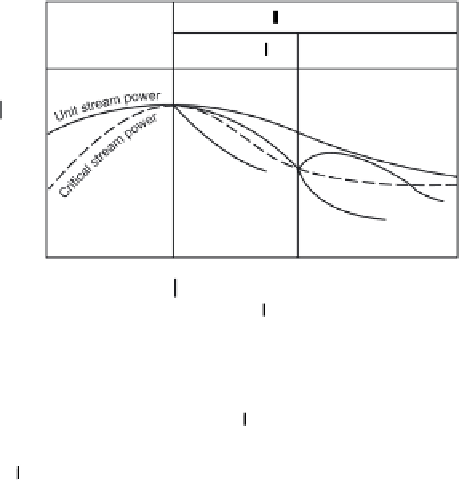Geoscience Reference
In-Depth Information
(a)
(b)
Figure 14.3
Critical power relationships. (a) Theoretical stream power relationships through alluvial fans (amended from Harvey,
1992a, based on the concept of the threshold of critical stream power of Bull, 1979). Solid lines show actual (unit) stream power
for 1, aggrading fans; 2, proximally trenched, distally aggrading fans; 3, midfan trenched fans; 4, through-trenched fans (for
context see Section 14.3.2). (b) Theoretical relationships between critical power and erosion/deposition behaviour.
Sediment transport on the fan can be as debris flow or
as fluvial tractional processes by sheetflows or by chan-
nelised flows. Sediments within dry-region fans are often
composite, ranging from fluvial or sheetflood to debris-
flow dominance.
1981; Suwa and Okuda, 1983; Johnson and Rodine,
1984; Pierson and Scott, 1985; Wells and Harvey, 1987;
McArthur, 1987; Rickenmann and Zimmerman, 1993;
DeGraff, 1994).
Debris flows consist of an unsorted mixture of water,
sediment matrix and coarse clasts. They vary in behaviour
depending on the water-to-sediment ratio, the particle size
of the matrix, especially the clay content, the matrix-to-
clast ratio and the clast size.
They range from viscous flows (the 'classic' debris
flows), within which deformation is by flowage and by
14.2.1.1 Debris flows
Debris flows on arid region fans have been described by
Blackwelder (1928), Beaty (1974, 1990), Blair (1999),
Blair and McPherson (1994a, 1994b, 1998) and Whip-


















